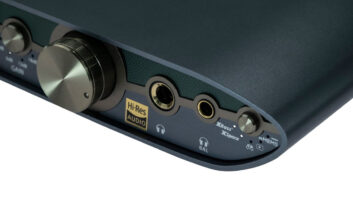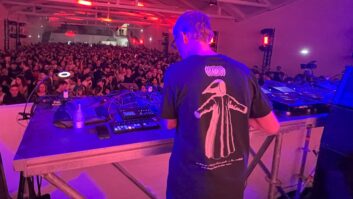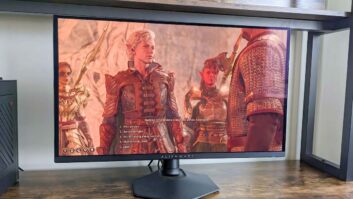
The back-to-school holiday (second largest revenue generating holiday for retailers) has grown a whopping 42 percent over the past 10 years. This year alone, the total spend is estimated to reach $68 billion between grade school and college students, of which college students (aka millennials) account for $43.1 billion in spend. According to the National Retail Federation’s latest statistics, the average family with kids in kindergarten-12th grade are expected to spend $630, while back-to-college families are looking at spending an average of $1,000 to get ready for the fall semester.
Where Do Millennials Spend?
The answer: Everywhere! Millennials are looking for a personalized and multichannel experience, including flexible fulfillment options. Discount stores have traditionally seen the most back-to-school shoppers, but are steadily on the decline, as are drug stores and thrift/resale stores. The two retail growth categories are clothing stores (+9.1 percent) and online (15.6 percent), at which the online category will continue to grow exponentially. Of these shoppers, millennials are the most inclined to leverage multichannel shopping to make their purchases. According to NRF’s 2015 Back-to-School survey, “More than 90 percent of on-line back to college and school shoppers will take advantage of free shipping, and almost half will buy online and pick up in store.” Millennials are those most informed shoppers; researching products before purchasing. Much of this homework is done via social media channels. For all the discrediting that Facebook gets, it remains the dominant social market exchange for millennials, with 75 percent of them sharing content using this platform. An Accenture study reports 68 percent of millennials “expect an integrated, seamless shopping experience regardless of channel. Their online research includes product ratings and reviews, retailer feedback and prices.”
For consumer electronics companies and retailers to pull in the millennial audience, they need to provide a robust front end experience including active social media and user friendly web experiences, as well as cross channel shopping options like ‘click and collect’ to win customer spend. One retailer who understands the importance of innovation during crucial back-to-school season is ModCloth. The fashion e-tailer launched a physical ‘pop-up’ store in San Francisco’s Union Square to entice shoppers to come in and try on the wardrobe, of which any purchases (made in-store on the website) will later be shipped to the consumer’s home. ModCloth offered a complimentary 50-minute session with a stylist who helped the shopper select the best clothes for their taste, exchanged clothes during the fitting room session and helped to ring them up at the register. This one-stop all-inclusive service is the way to win over millennial shoppers and win over market share from less ‘personalized’ online retail competitors.
Then of course there’s an even bigger example of this concept that has shaken the way millennials shop. Somewhere in its meteoric rise to a $40 billion valuation, Uber changed our entire perception of what a taxi service is. Along the way, it’s also changed the way we talk about disruptive technology. Take for example the OnePlus One, a new Android smartphone launched in 2014 with the boisterous claim of being a “flagship killer.” Its parent company, the Chinese based OnePlus was an unknown start-up when the phone launched. The device itself is made by contract manufacturers and sold direct to customers at an unbeatable price. And by combining a smart mix of provocative marketing, artificial scarcity and an invitation-to-buy system that maps planning to demand, OnePlus sold more than 1 million phones within its first year on the market. Fast-moving, edgy companies like OnePlus One and ModCloth bring a different model and experience — something millennials have shown to be drawn to.
Fulfill against promises
The promise of new and flashy front-end consumer choices implies back-end capability to fulfill against those promises. This generation of consumers is willing to pay to get what they want, when they want. The introduction of omnichannel and price-comparison shopping means that retailers have very little predictability into their forecasts, which causes inventory problems. The two biggest concerns for retailers regarding back-to-school shopping are out-of-stock and excess inventory issues. As long as retailers, manufacturers and their supply chains possess a channel-siloed inventory model, out-of-stock and hence unmeasurable lost sales will result. And conversely, overestimating forecast without the ability to re-route inventory across channels could lead to excess inventory, which will eventually have to be marked down, damaging profit margins.
As the retail environment continues to evolve, companies that don’t get ahead of the fulfillment curve will fall further behind. Companies that use ERP systems and other manual processes to manage their supply chain won’t have full visibility into their sourcing, warehouses or stores to be able to support their omnichannel strategy. Delivering products and services in a truly seamless fashion will require companies to make profound changes across their entire organization and supply chains—operating more as a network than a single entity – to build an agile supply chain with quick fulfillment opportunities. To close this emerging consumer generation gap, retail and manufacturing leaders need to take action now to provide the seamless end-to-end experience millennials demand.
Leela Rao-Kataria is retail marketing manager at GT Nexus. GT Nexus operates a Cloud-based business network and execution platform for global trade and supply-chain management. Over 25,000 businesses across industry verticals, including Adidas Group, Caterpillar, Citi, Columbia Sportswear, DHL, Electrolux, Levi Strauss & Co., Nestlé, Pfizer and Sears share GT Nexus as their standard, multi-enterprise collaboration platform.













